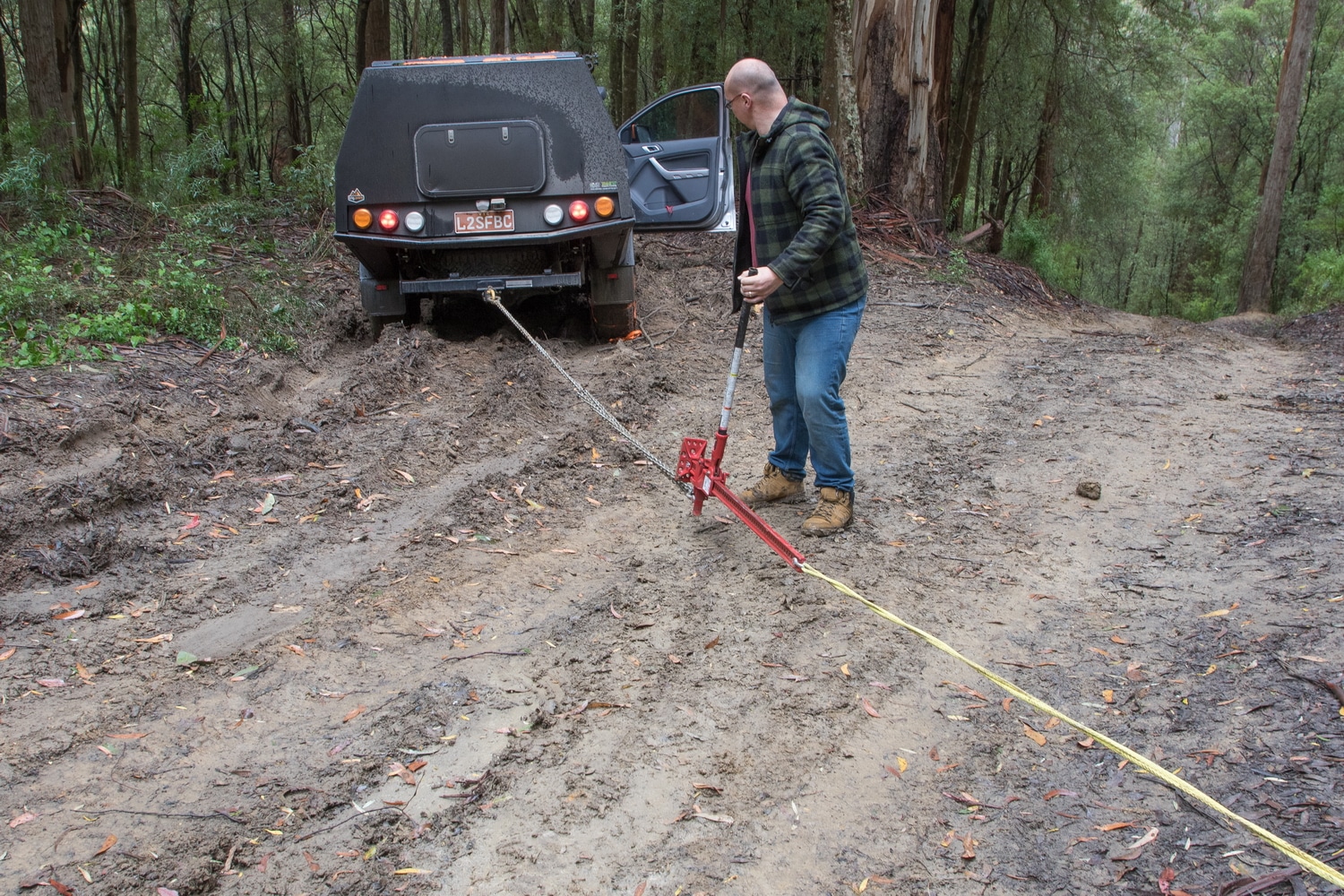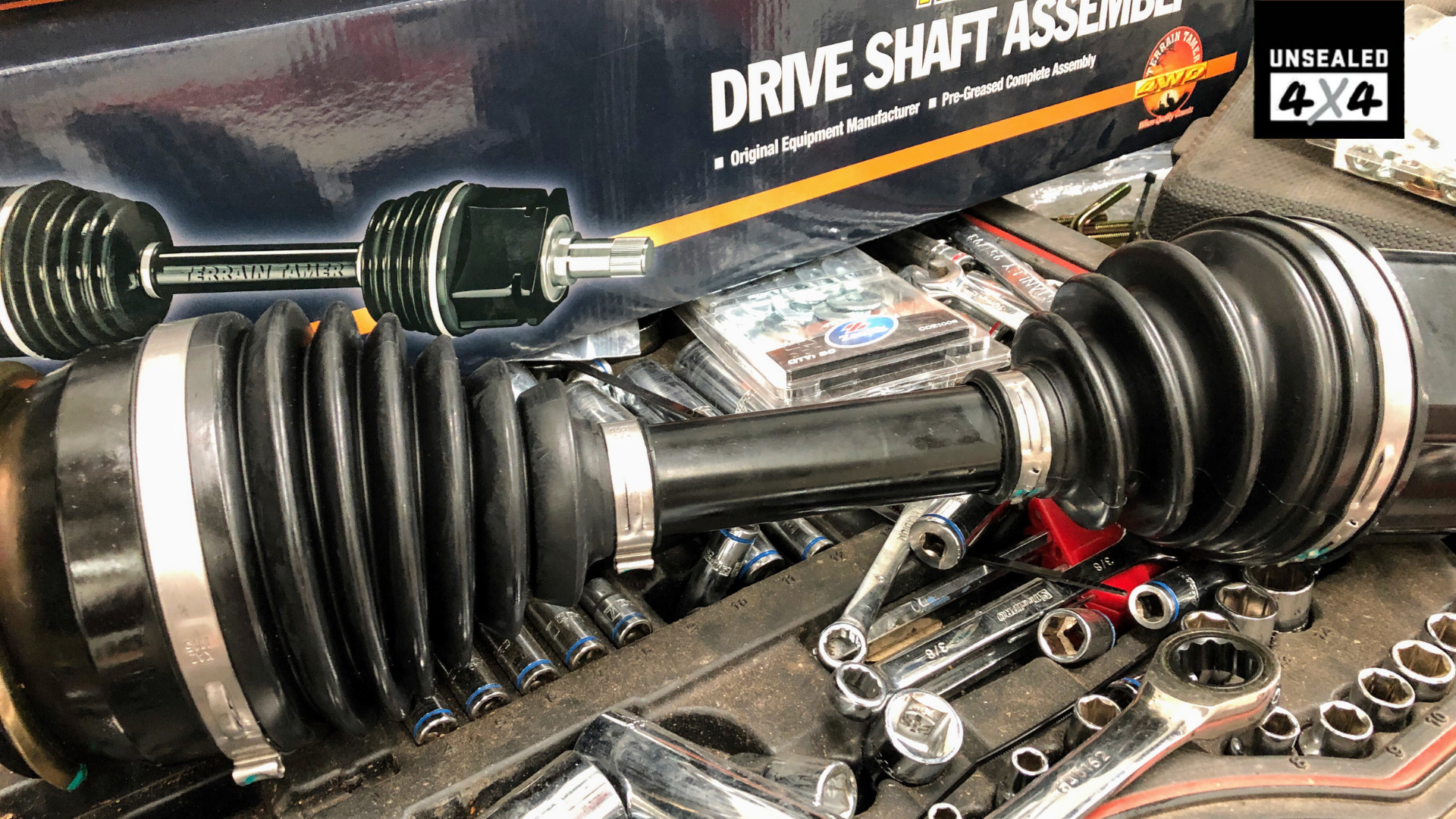Check out Unsealed 4X4‘s Bog Out Review – should you carry a set of these winches for your wheels in the back of your 4X4? We put them through the wringer to find out.
We’ve been recovering off-road vehicles for many decades yet every so often something new appears on the market such as these Bog Outs, which are billed as winches for your wheels. Like other recovery gear, there are pros and cons with their use, and it takes some expertise to use Bog Outs correctly, so settle back and let’s get into it.
The basic concept of Bog Out is simple: you have a stuck 4X4, so you use Bog Outs to create a loop around one or two of the wheels, fix them in place with small connector straps, start driving and the Bog Outs wind around the wheels, pulling the vehicle out. All you need is a functioning vehicle and a suitably positioned anchor point.
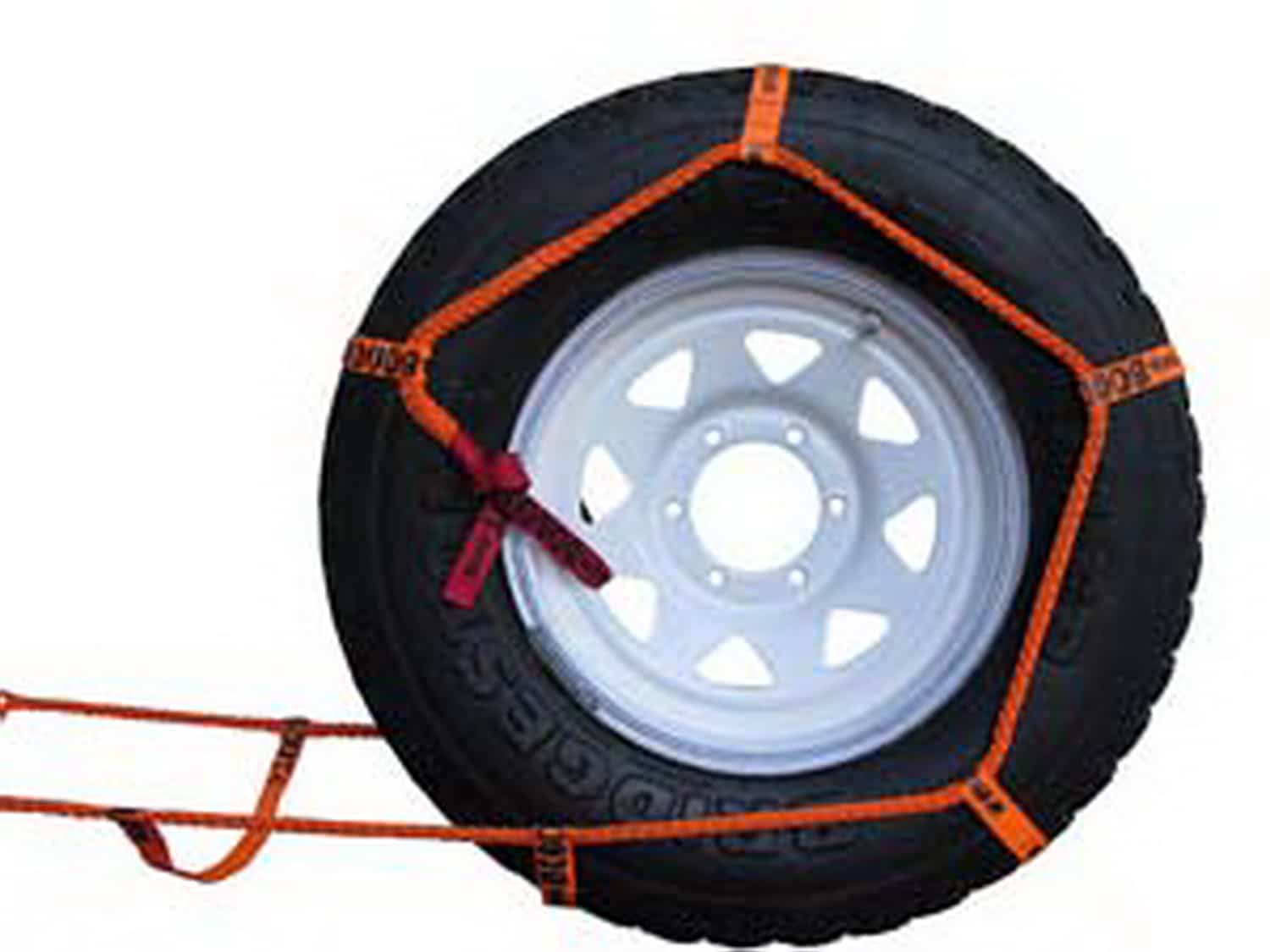
Simple in theory but not always in practice. First off, you have to take into account the vehicle’s differentials, which we’ve explained in our What is a Diff-lock article. If you’re stuck, then it’s fair to assume that at least one wheel is spinning, and that’s the wheel you apply your Bog Out to. That’ll start to pull you out, but what if the other wheel loses traction and starts spinning? The wheel with the Bog Out on will stop spinning and become ineffective, while the other wheel spins freely.
You then have two options: either switch the Bog Out to the other wheel or, better yet, use two Bog Outs in the first place – one on each wheel. However, it should be said this ‘differential’ problem won’t arise if you use a locked differential, and will also be less of a problem if your vehicle has an effective brake traction control. And just in case you’re thinking that if you have lockers you won’t need Bog Out… well, you must be new to the world of four-wheel driving. I should point out that during testing the use of one Bog Out did not slew the vehicle offline, despite the asymmetric pull. It’d be no worse than driving up using a locked diff.
One problem with Bog Out is that an anchor point has to be almost in line with the vehicle, and the right distance away, so the Bog Out can be stretched out and just reaching the tyre. If it’s not in line, then the wheel won’t loop into the Bog Out properly, and if it’s not the right distance away then the system can’t be set up at all. The Bog Outs are only about four-metres long and you don’t want to lose any of that length.
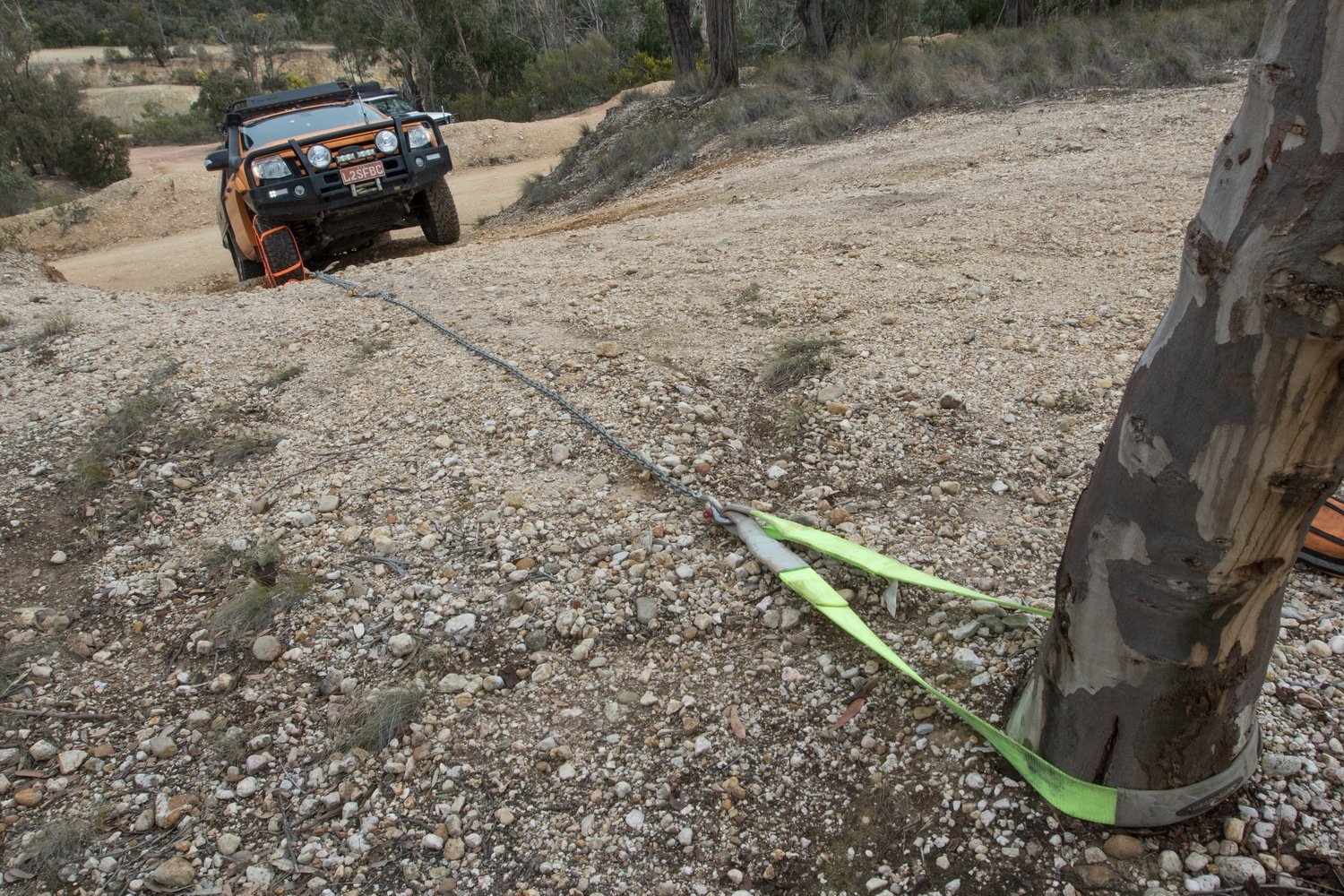
Regarding the distance issue, there are a few solutions to set up a variable-length anchor line. First, you can use a drag chain as I did. The advantage of a chain is that unlike a strap or rope you can vary the length very easily, so it’s useful not just for Bog Outs but many other recovery situations; for example, winching with a Hi-Lift jack or, of course, for dragging trees out of the way. An alternative would be to wrap a winch extension strap or rope around a tree a few times, similar to to the way in which a winch rope is wound onto a drum. This latter technique has a huge advantage that we’ll come to later. Or you could use a sheepshank knot to shorten your rope. Either way, the right-length problem isn’t insurmountable.
Finding an in-line anchor point can be more difficult though, and that’s where you might need to get a bit creative by using multiple anchor points. This is a similar problem to winching, but Bog Outs are certainly more direction-sensitive than winches. However, Bog Outs stress their anchor points less than winches because there’s no downward element in the pull, so you may be able to peg out some Bog Outs in lieu of an anchor tree, but that presumes you have pegs and the ground is suitable. Another vehicle could also act as an anchor point.
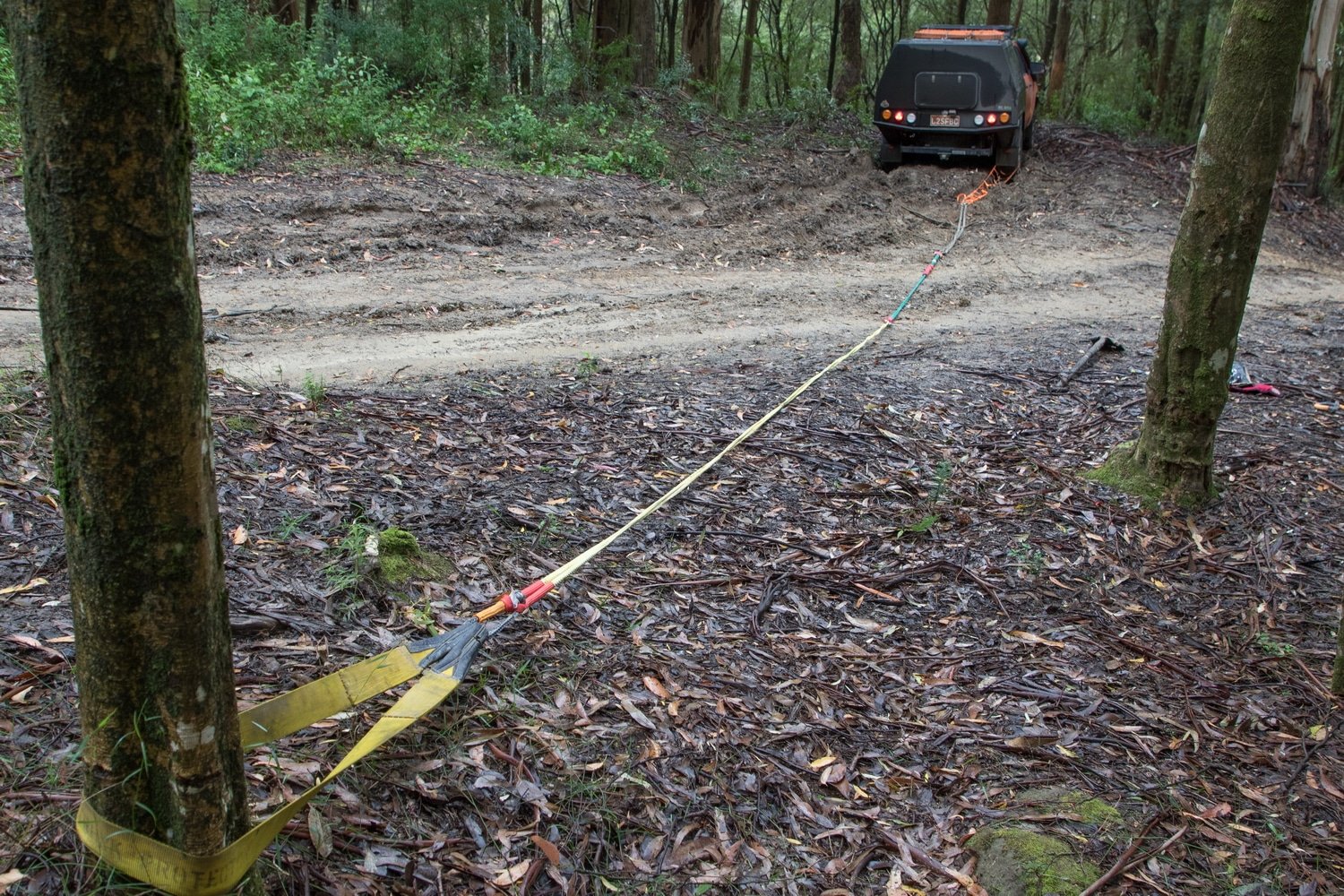
We’ve used Bog Out for real to recover our Ranger PX and this is what we found. There are two methods to attach the Bog Out: tying the connector short strap through the rim to create a loop or looping the entire Bog Out over the wheel like you would a snow chain (but much easier), and then tying it off. Both are easy, and the tip for the first method is to tie the strap to the side of the Bog Out that will go through the inside of the rim, and pull it through. I found this part straightforward, even in mud and when the wheel was sunk into the ground, but I had practised earlier on my driveway.
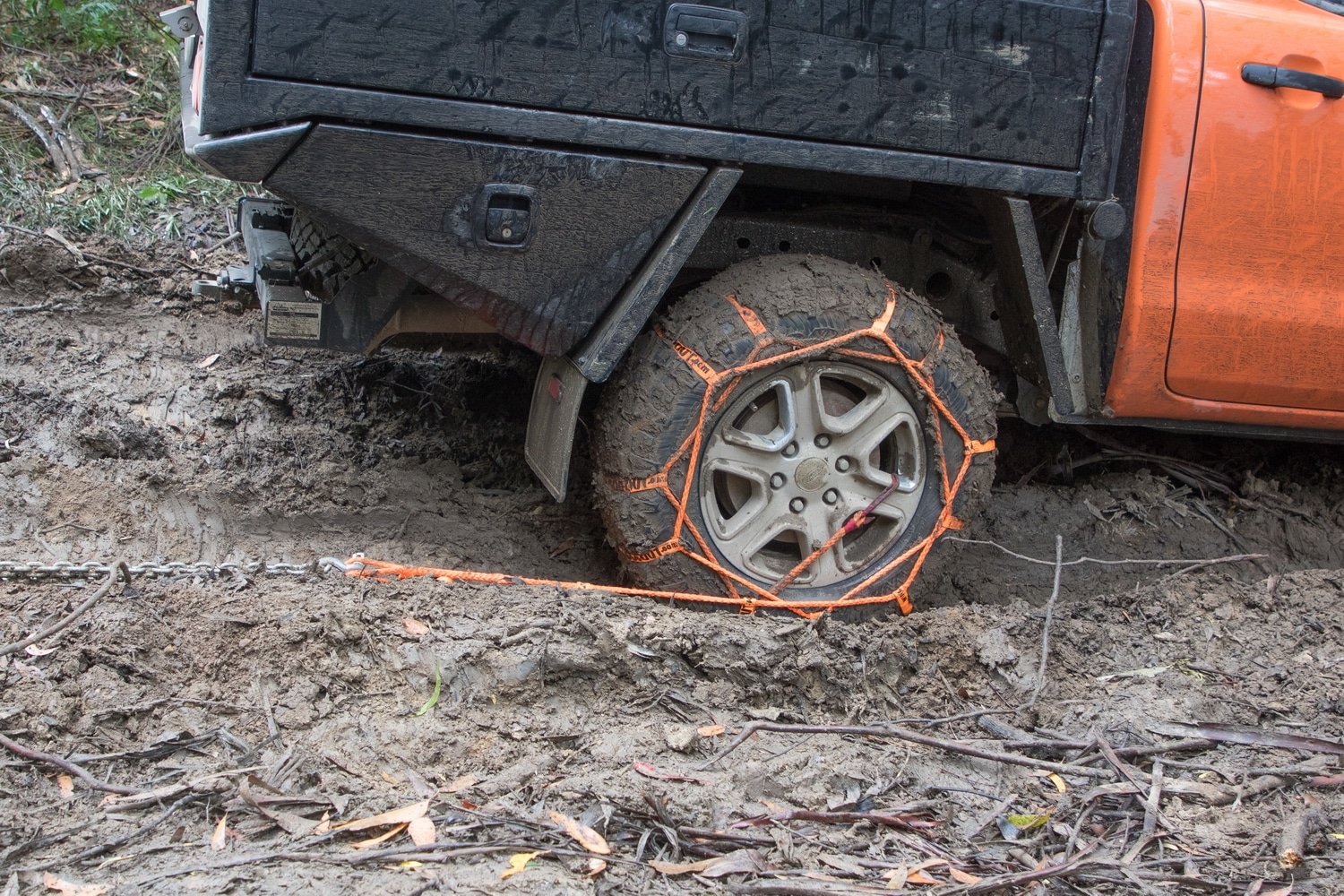
With everything set up, it was time to get back in the car and see how it all worked. The answer? Beautifully. It’s a really slow and controlled pull that feels a bit like winching but there’s no sensation of the car’s nose being pulled down. The Bog Outs are strong (rated to 4500kg) so if you have more force than that on a single wheel I’d suggest you’d be looking at broken bits of metal – either the vehicle is moving or you’re pulling the anchor out. The vehicle pulled straight too, as the wheel without the Bog Out helped to steady the vehicle.
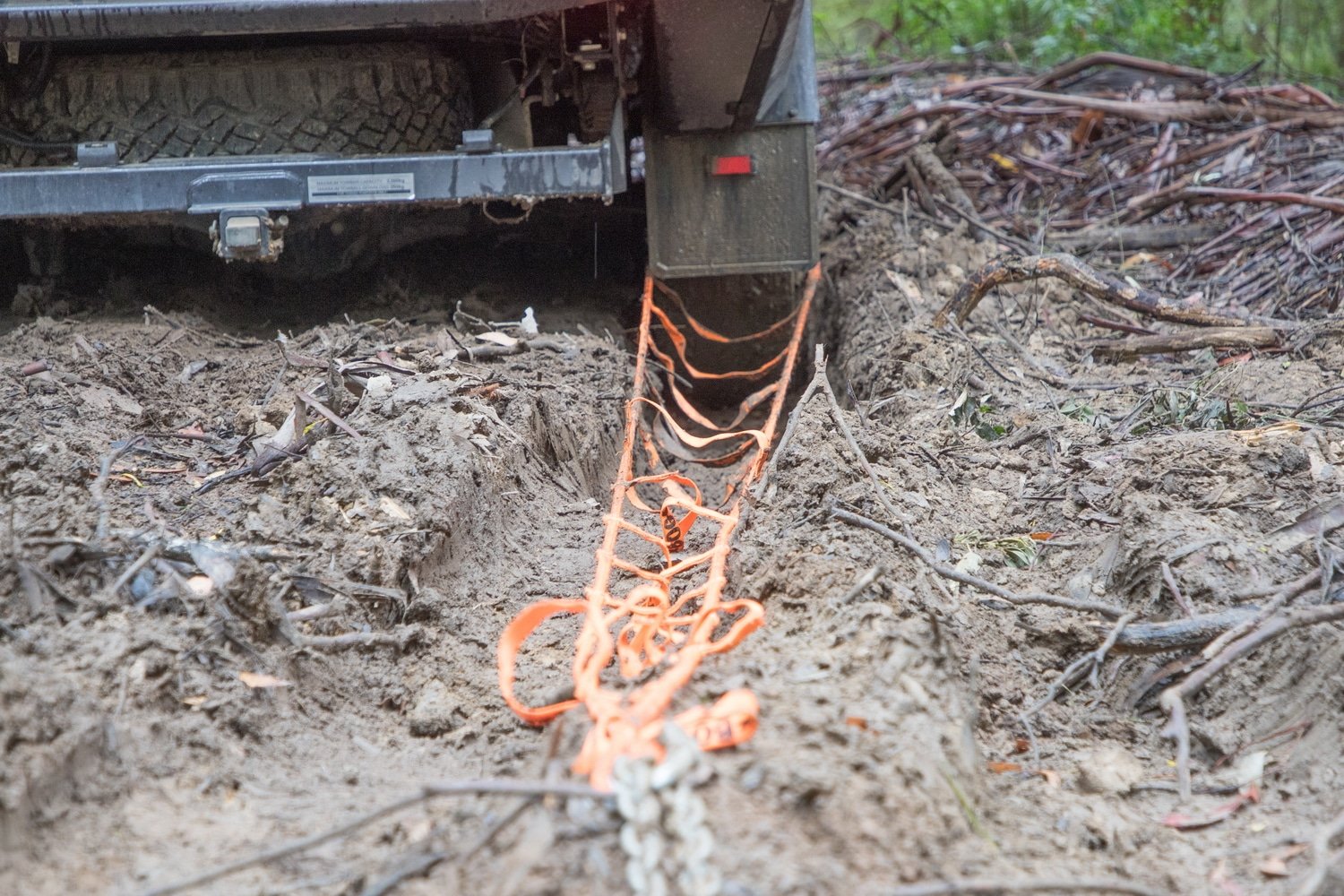
Then comes the potentially difficult part: removing the Bog Out. If you’ve managed to free yourself then it’s quite easy; disconnect the Bog Out from your anchor point, undo the sheet bend knots and drive a little till it comes off. I made the rookie mistake of not doubling the strap in the knot, so it was harder to remove than it needed to be, but not impossible.
The potential difficulty comes if you’re not freed from your situation. For example, you need to move the car 10 metres, but the Bog Out only shifted you four metres. You’re now faced with a dilemma; how do you get the Bog Out off so you can reset for another pull? This isn’t a problem with a winch, you just chock the car, reset and keep going. But it is with a Bog Out. You’re there, unable to move forwards or backwards, with the Bog Out wrapped around the wheel. So what do you do?
There are a few options. The first is to utilise two Bog Outs, so when you’ve used one, attach the other Bog Out to the other wheel and continue driving. Or you could connect two or more Bog Outs in tandem, so you’ve got a 9m pull, assuming you need to move the car 8m or less to get unstuck. Bog Out claims to have used up to five connected together. Or you could jack the wheel up and pull the Bog Out off that way. The final option is to drive up onto two blocks of wood so you can work the Bog Out from under the tyre without jacking – see the photo sequence. Could even use just one block.
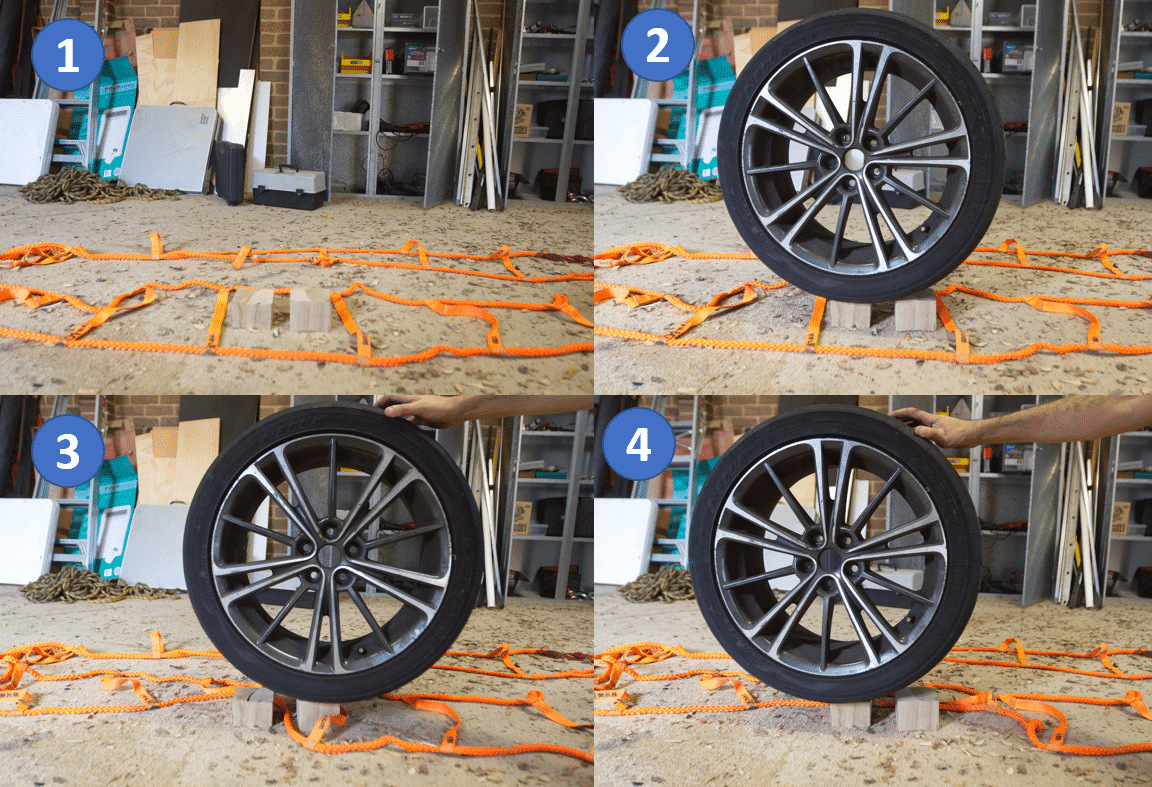
To really test the Bog Out, not only did I bog the Ranger in mud facing downhill so I couldn’t move it in 4WD, I then put it in 2WD with the rear locker on and recovered it that way. The Bog Out worked perfectly, but the ropes compressed and sank into the tyre which was at 16psi, showing the force required to pull the car out. That won’t damage the tyre or the Bog Out, but it will make it difficult to remove, particularly if you run newish mud terrains with deep treads. It is possible though, but takes a bit of pulling.
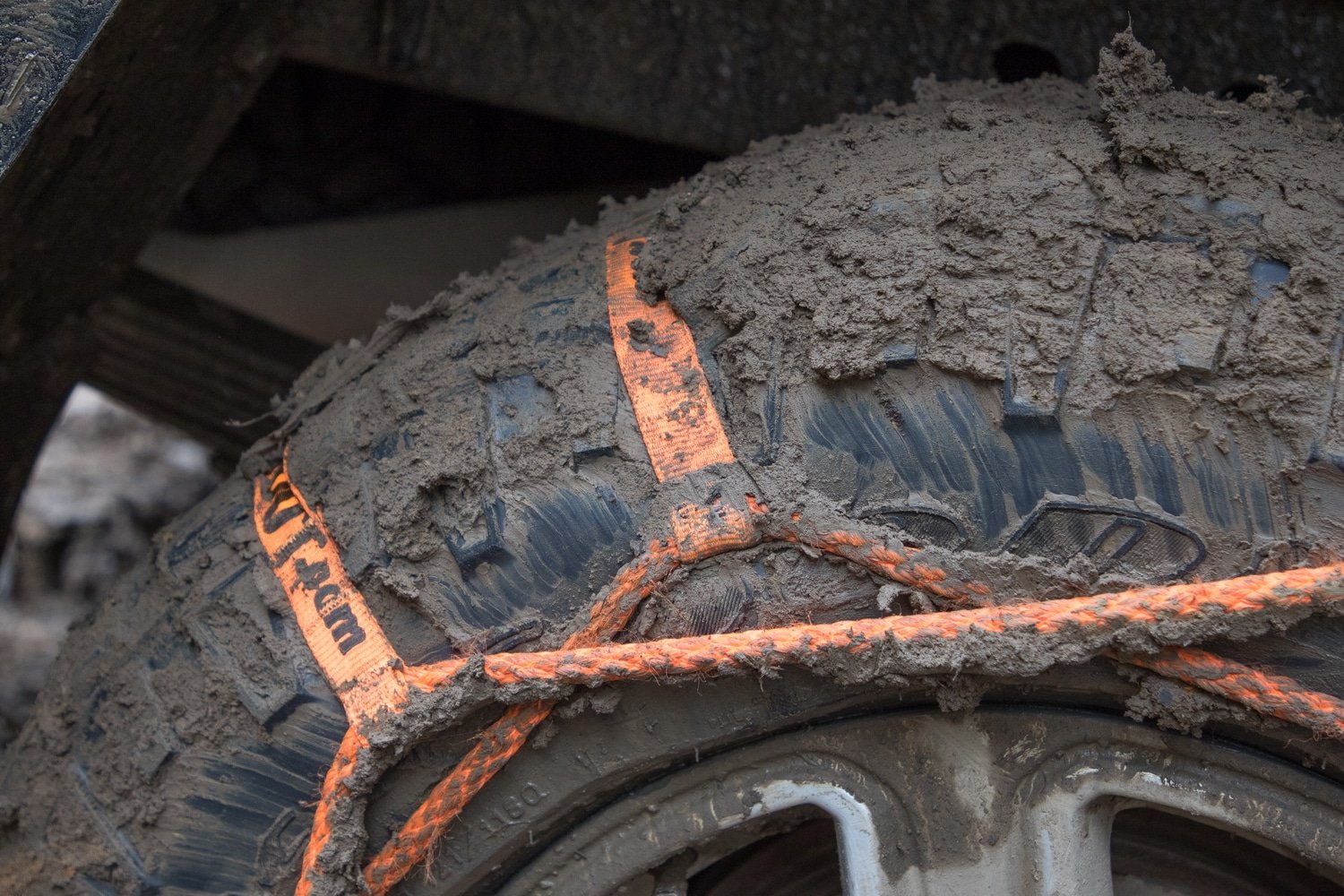
When trying to get the Bog Out off I snapped the connector strap by driving forwards at the wrong time. That was operator error, and may have been averted with closer inspection by helpers. However, I just tied the ends of the connector strap together, and that was sufficient to hold it for the next try. Note that the strap doesn’t actually take much strain, all it does is hold the Bog Out on until it gets around the wheel, just like winding winch rope onto a drum. I suspect you could also use other bits of rope or even cable ties if needed, and we’ve all got plenty of them. Bog Out sells spares anyway.
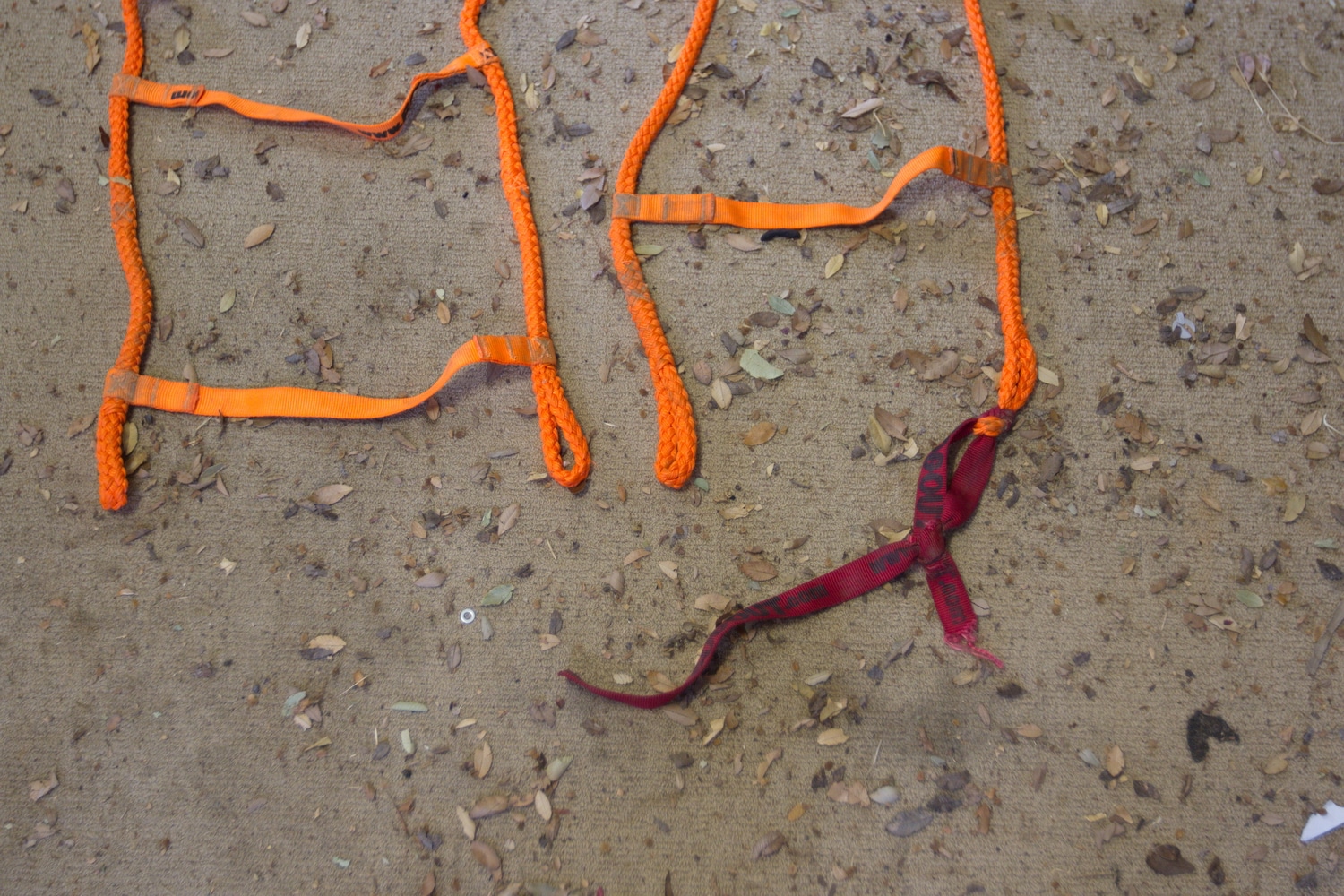
What’s Bog Out best for?
Final Thoughts…
Bog Out – Product Details and Specifications
- Vehicle recovery system rated to 4500kg; 4.5m length.
- RRP $159 each, $279 for a twin pack, $399 for twin pack with two 15m rope extension and four soft shackles.
- Works on tyres 165 to 345mm width, on virtually any vehicle, 2WD or 4WD, but must be attached to a driven set of wheels.
- 12-month guarantee and “if you break it, we’ll replace it”.
- Custom lengths available.
- Over 20,000 sold.
Bog Out Concerns
Not that I’ve experienced. The reason is that the other three wheels are turning and providing stability. If needed, you could always use two Bog Outs, one per wheel, even possibly from the same anchor point.
Do I need to get under the vehicle to the other side of the tyre?
No, we were able to do everything we needed to by squatting next to the wheel. The main tip is to tie the connector strap on the side of the Bog Out you’ll use, then reach around and pass it through the wheel, or use the loop-over-the-top method of attachment.
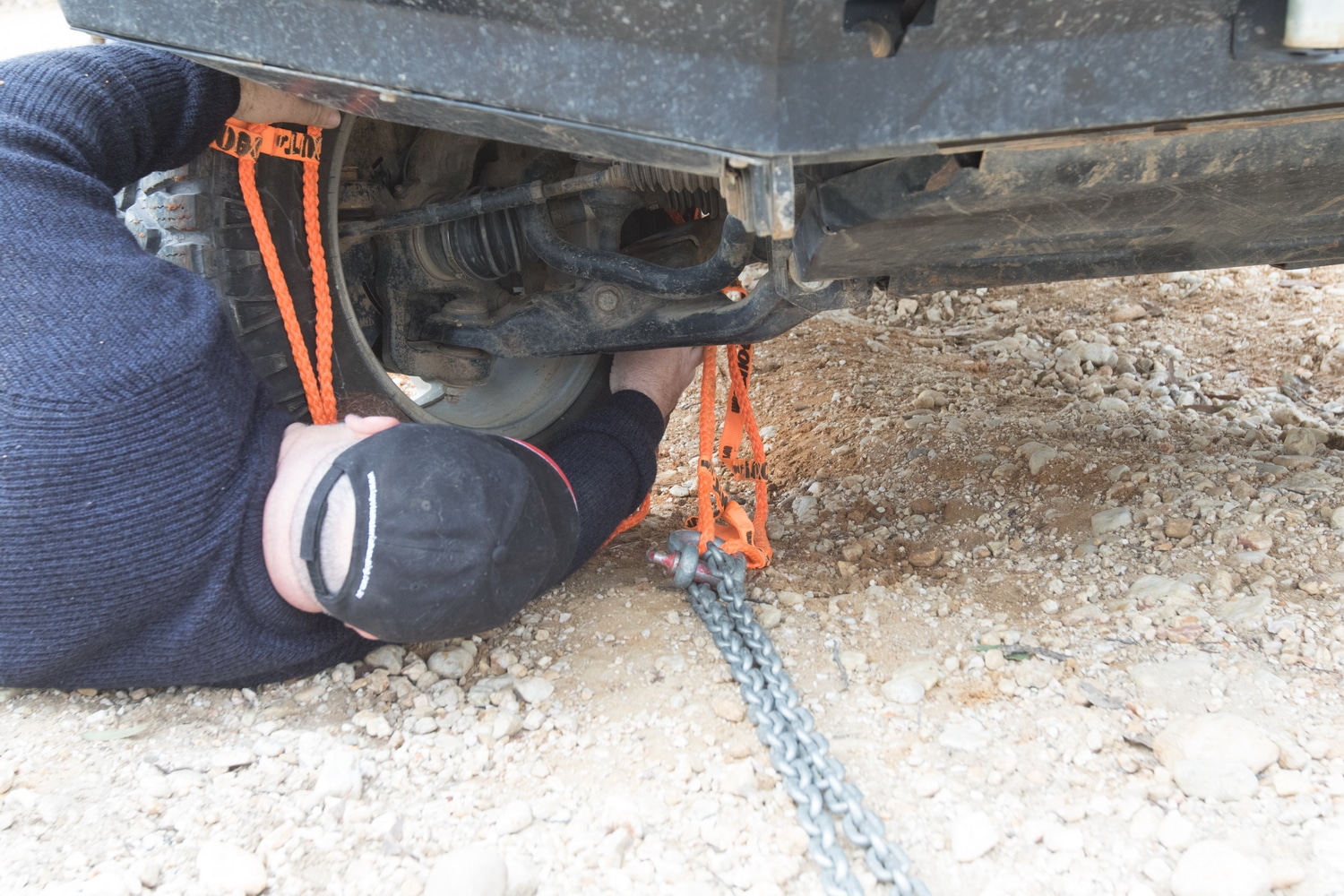
Second Opinion – Tony Vaughan, 4X4 trainer
All Tracks 4WD / Getabout Training (FNQ)
Bog Out Pros & Cons
- Works forward or backward;
- Single-vehicle recovery possible;
- Not fixed to any vehicle;
- Light, cheap, easy to store;
- Also usable as winch extension rope or tow rope;
- Maintenance-free, just wash;
- Works on just about any vehicle; and
- Safe, relatively low energy and everything is ground level, five per cent stretch at most.
- Requires an anchor, and it should be in line;
- Anchor line needs to be the right length;
- Can be tricky to remove if the vehicle is still stuck, but easier with right tools and practice;
- Requires a reset every four or eight metres;
- Need to be careful of clearance around the wheel; and
- Requires access to the wheel, and will be difficult and messy in very deep mud or under water.
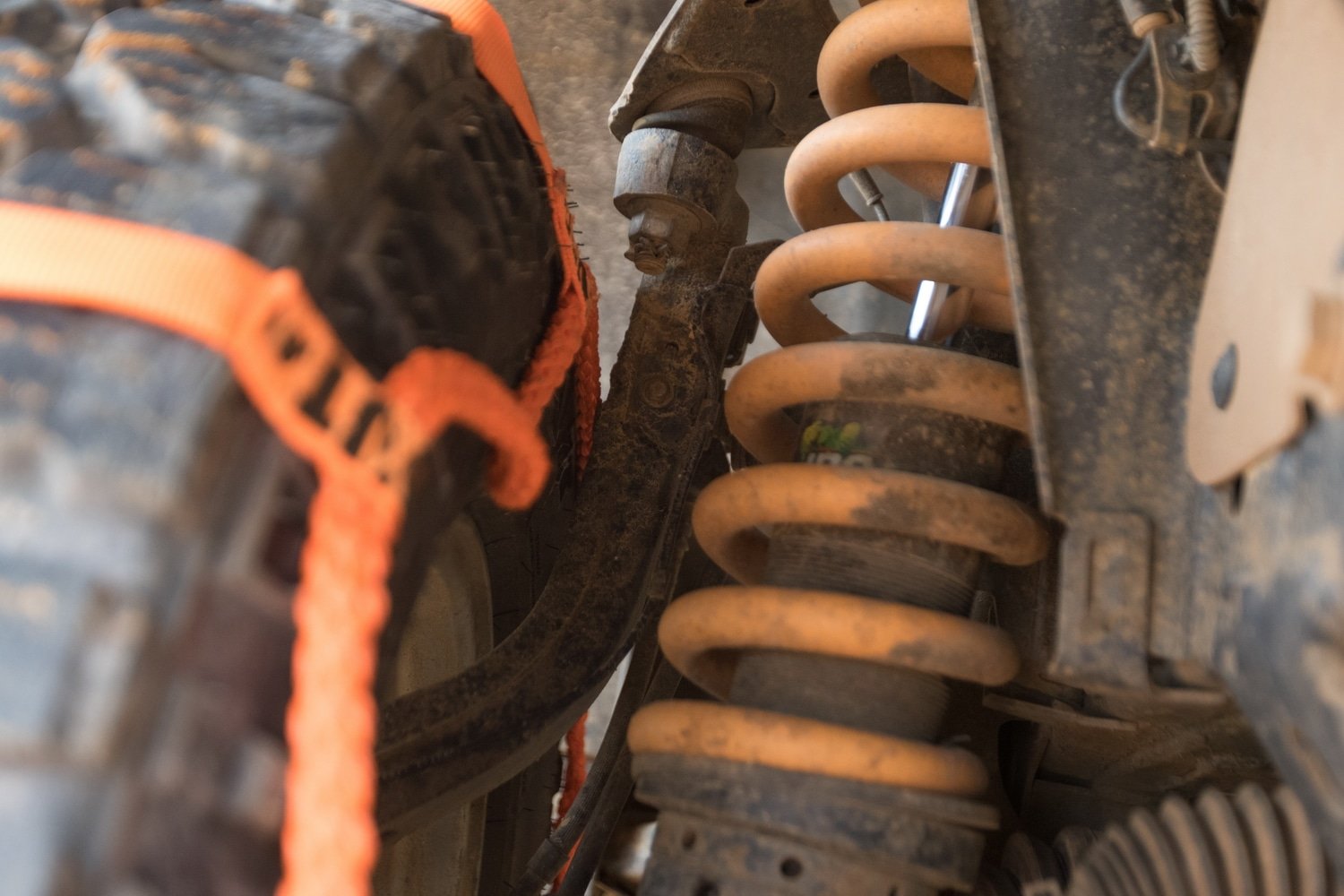
Unsealed 4X4‘s Bog Out Tips
- Like any recovery gear, you need to develop expertise and technique. Practice;
- Take enough gear so you can set up a variable-length anchor;
- Useful but not essential to have someone looking at your wheel(s) as they go onto the Bog Out;
- I would buy a pair so you can pull on two wheels at the same time, or lengthen the recovery. This especially applies to vehicles that don’t have cross-axle differential lock on front and rear, or good traction control;
- Ensure the wheel goes into the Bog Out harness properly as it can damage brake lines and the like if it slips off. Stop and check; there’s no need to do it all in one go with Bog Out;
- Consider also wheel blocks so you don’t need to jack the wheel to remove the Bog Out in case you don’t make it out in the length of a single pull; and
- Think about how far you need to move the vehicle and how you’ll remove the Bog Out in advance.
Bog Out compared to…
The major advantage of ramps compared to Bog Outs is that they require no anchor points, so they work well on beaches. They can also be used to provide extra clearance – if your diff is properly hung up, no amount of dragging will help, Bog Out or winch. You can also use ramps to improve approach/ramp/departure angles, and lay them down ahead of the car so you don’t get stuck in the first place. However, sometimes ramps just don’t provide the traction needed easily, and that’s where Bog Out can help. I would say Bog Outs are complementary to traction ramps.
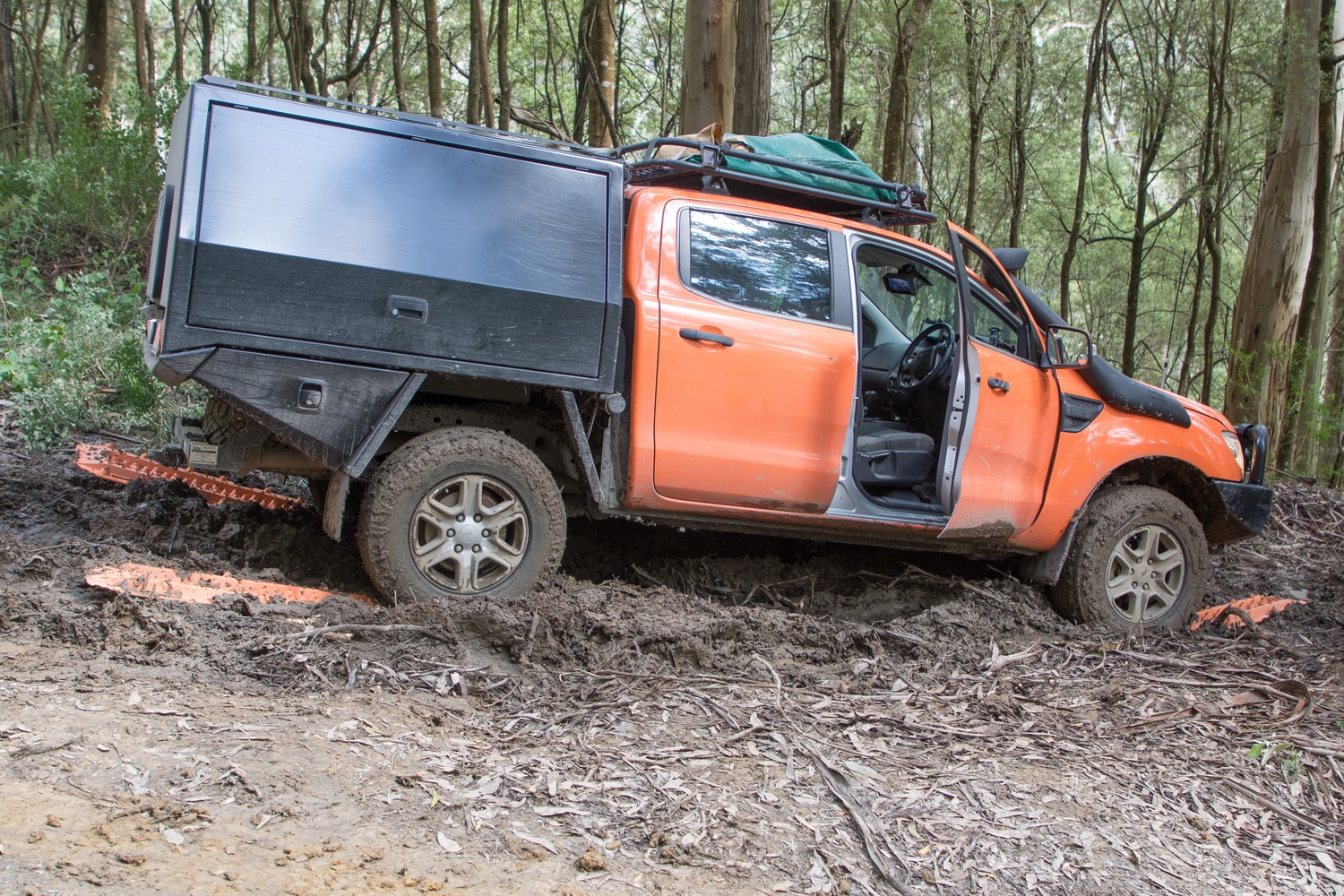
If you carry one of these then I think your need for Bog Out is much reduced, because I think anything you could use Bog Out for you could use a portable winch for, even if the two don’t operate in the same way. But the portable winch can do things the Bog Out cannot. Both can pull a vehicle forwards and backwards, and both require anchor points, but the winch can pull in any direction, including sideways. There will be more stress on the winch anchor point than the Bog Out, but the winch is less directionally sensitive. The winch doesn’t require access to the wheel either, or the vehicle to be working, but it does require some physical effort which may be beyond the ability of some. A Hi-Lift jack working as a winch is also sensitive to anchor line length, as is Bog Out.
